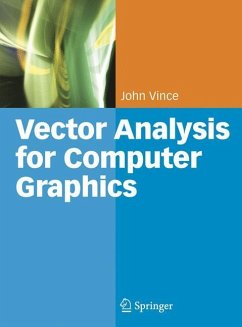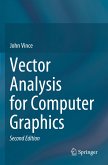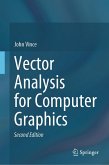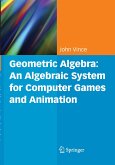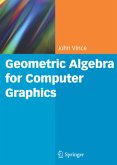In my last book, Geometry for Computer Graphics, I employed a mixture of algebra and vector analysis to prove many of the equations used in computer graphics. At the time, I did not make any distinction between the two methodologies, but slowly it dawned upon me that I had had to discover, for the first time, how to use vector analysis and associated strategies for solving geometric problems. I suppose that mathematicians are taught this as part of their formal mathematical training, but then, I am not a mathematician! After some deliberation, I decided to write a book that would introduce the beginner to the world of vectors and their application to the geometric problems encountered in computer graphics. I accepted the fact that there would be some duplication of formulas between this and my last book; however, this time I would concentrate on explaining how problems are solved. The book contains eleven chapters: The first chapter distinguishes between scalar and vector quantities, which is reasonably straightforward. The second chapter introduces vector repres- tation, starting with Cartesian coordinates and concluding with the role of direction cosines in changes in axial systems. The third chapter explores how the line equation has a natural vector interpretation and how vector analysis is used to resolve a variety of line-related, geometric problems. Chapter 4 repeats Chapter 3 in the context of the plane.
From the reviews:
"Vince's book applies to more than computer graphics: it is a resource for many areas in applied mathematics. ... Students in computer graphics courses would find it very useful if their class discussions moved into the mathematical fundamentals underlying the tools. ... Undergraduate students especially lack the mathematics background that this book provides. ... It is comprehensive and coherent, and a good addition to the library of any computational scientist." (Anthony J. Duben, ACM Computing Reviews, Vol. 49 (8), August, 2008)
"Vince's book applies to more than computer graphics: it is a resource for many areas in applied mathematics. ... Students in computer graphics courses would find it very useful if their class discussions moved into the mathematical fundamentals underlying the tools. ... Undergraduate students especially lack the mathematics background that this book provides. ... It is comprehensive and coherent, and a good addition to the library of any computational scientist." (Anthony J. Duben, ACM Computing Reviews, Vol. 49 (8), August, 2008)
"Each chapter presents some topic from vector analysis and contains a well-developed derivation and mathematical demonstration that makes following the topic easier. ... The book is written in a very accessible fashion. The author gives many examples presenting the notations and problems considered, making study easier. The book is suitable for undergraduate students of computer science, mathematics, and engineering, and is an ideal reference for researchers and professionals in computer graphics." (Krzysztof Gdawiec, zbMATH 1478.68008, 2022)

